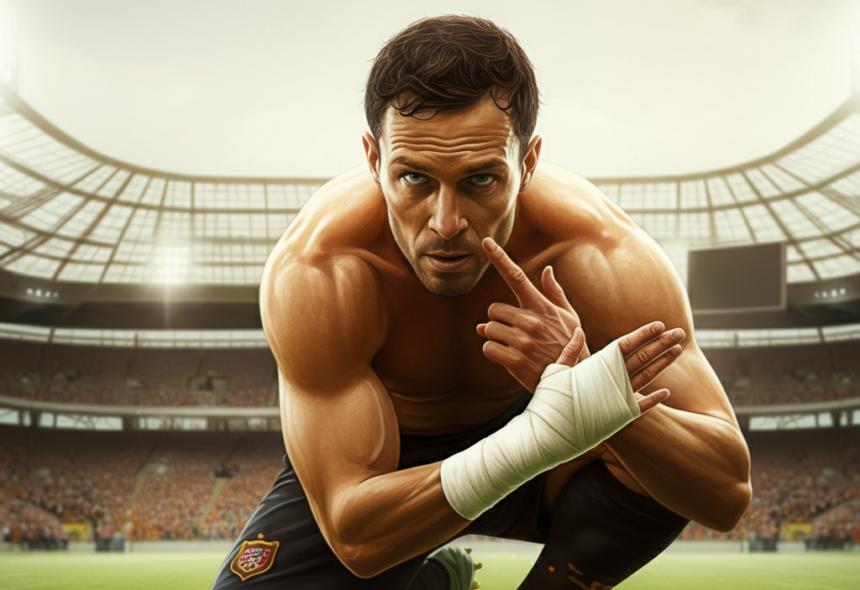Few things test an athlete’s determination more than a physical condition threatening their performance. For one famous athlete, developing trigger finger—a condition causing pain and restricted movement in their finger—put their illustrious career at a crossroads. But instead of letting it hold them back, they turned this challenge into an inspiring story of resilience, adaptation, and triumph.
What’s more inspiring than watching someone rise above adversity? If you’re curious about how one athlete overcame trigger finger while continuing to thrive at the highest level, you’re in the right place. We’ll explore what trigger finger is, how it impacts athletes, and how this particular champion turned the odds in their favor.
Get ready for an incredible story that reminds us that even setbacks can pave the way to victory.
What Is Trigger Finger?
Before we dive into this athlete’s personal journey, let’s break down the condition they faced. Trigger finger, medically known as stenosing tenosynovitis, occurs when one of your fingers gets stuck in a bent position. It can pop straight suddenly—just like a trigger being released—hence the name.
For someone living with trigger finger, the symptoms can include:
- Pain at the base of the affected finger or thumb
- Stiffness or locking of the finger, especially in the morning
- A clicking or popping sensation when bending the finger
- Tenderness or swelling around the tendon
While the condition often develops due to repetitive hand motions or excessive gripping, it’s an uninvited guest that no athlete would welcome into their career. For athletes who rely on flawless precision and grip—think tennis players, climbers, basketball stars, and quarterbacks—trigger finger can pose unique challenges that go beyond physical pain.
The Athletic Twist
Imagine gripping a tennis racket, throwing a flawless spiral in football, or executing a slam dunk, only to feel your finger painfully lock in mid-action. That’s the reality for athletes with trigger finger. Every movement, every repetition, carries the weight of unpredictability—and that’s a heavy burden when you’re playing to win.
For many athletes, the fear isn’t just the pain itself—it’s the thought of losing performance consistency. But what if injury could unlock an equally powerful story of resilience?
Meet the Famous Athlete Who Fought Back
One widely celebrated athlete found themselves facing this very challenge. While their identity might surprise some fans, their grit and refusal to back down are lessons for everyone.
Trigger finger emerged during a critical point in their career—one marked by sell-out crowds, media attention, and pressure to perform at their peak. The stakes were high, and the condition wasn’t something they could simply ignore. Here’s how their incredible story of perseverance unfolded.
Step 1. Acknowledging the Challenge
For seasoned athletes accustomed to pushing through discomfort, acknowledging the severity of the problem can be difficult. For this athlete, the telltale signs—finger pain, stiffness, and locking—became too frequent to set aside. Initial frustration soon turned into decisive action.
They sought medical advice, determined to understand what was happening and what could be done about it. This first step wasn’t easy, but it was essential for moving forward.
Step 2. A Customized Recovery Plan
Once they were officially diagnosed with trigger finger, the next step was pivotal. Collaborating with doctors and specialized sports therapists, they embarked on a tailored rehabilitation plan designed to minimize strain while remaining active.
Some key components of their recovery included:
- Physical therapy to stretch and strengthen the finger’s tendons
- Anti-inflammatory treatments, including icing and medication for pain relief
- Modified training routines that prioritized healing without sacrificing fitness
- Splints and supportive braces to reduce pressure on the affected area
It’s important to note that their approach was unique to their profession, blending medical expertise with athletic training principles. And, as with any road to recovery, consistency and patience were non-negotiable.
Step 3. Leveraging Mental Fortitude
Physical injuries can wear you down, but for professional athletes, mental resilience is just as critical. A focus on adaptive strategies—rather than fear of what was lost—deepened this athlete’s mental toughness.
Using mindfulness techniques, visualization exercises, and support from their team, they turned moments of doubt into opportunities to reset and refocus.
Overcoming the Odds
Months of dedication, therapy, and modified training paid off. Slowly but surely, the athlete began to regain flexibility and confidence in their grip. Every milestone—from gripping a ball to executing complex plays—marked a victory over trigger finger.
But the ultimate win? Returning to their sport and performing at the same electrifying level that fans knew and loved. They didn’t just return—they thrived, showing that a setback doesn’t have to define the trajectory of your career.
Lessons We Can All Learn
The athlete’s courage and determination remind us that resilience isn’t just about bouncing back; it’s about moving forward with a renewed sense of purpose. Whether you’re an athlete, a professional, or tackling your personal challenges, their story offers key takeaways:
- Don’t ignore persistent symptoms. Early intervention is crucial.
- Find a recovery plan tailored to your needs. Recovery isn’t one-size-fits-all.
- Stay mentally strong. You can overcome more than you think with the right mindset.
Is Trigger Finger Holding You Back?
Trigger finger isn’t just an athlete’s challenge—it’s something anyone can face. But it doesn’t have to stop you in your tracks. Seek medical advice, lean on the resilience within you, and remember that every challenge comes with an opportunity to grow stronger.
Stories like this remind us what we’re capable of when passion and perseverance collide. If that famous athlete can overcome the odds, you can too.






